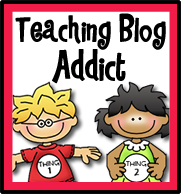
I am starting to get into the mode of preparing content for school rather than just thinking about what my room will look like and organizational materials. I know those are important, but they tend to require less thinking than writing lessons. I am slowly trying to gear my brain up for lessons...
Anyway, I have come upon some fun math technology tools that I am hoping to use this year. I have posted before about math websites. Most of these are new ones that I have recently found. I thought I would share with you!
You know I love SUMDOG, so I'll just give them another quick plug in case someone out there still hasn't been to their awesome site. My kids love Sumdog!
McGrawHill has a great work site with math tools that you could use on your SMARTBoard or have students use on individual computers. Parents might even like to be able to use them from home.
Everyday Math has a very similar work site, too. Both have their tools setup by grade level.
http://everydaymath.com/EM_eToolkit_Demo/eTools_v1.html
This site from the UK has a puzzle each day. Love it!
The MathFacts CAFE is free and gives you access to math worksheets, factsheets, and flash cards...
Finally, I liked this resource from Teacher LED will help students visualize the process of multiplication.
I know there are so many great sites! It is hard to pick which ones to share! If you would like to share your own math technology sites, I would love to learn about them!










































